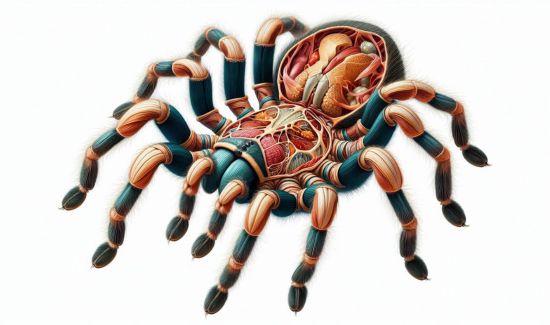Introduction
Table of Contents
Tarantulas are fascinating creatures, known for their large size, hairy bodies, and striking appearances. While many people find them intimidating, these arachnids are truly remarkable in terms of their anatomy and behavior. One of the most intriguing aspects of tarantula anatomy is their joints, which allow them to move gracefully despite their bulky appearance. This article will explore the tarantula joint structure, explain how it works, and provide insights into why this part of their body is so essential for survival. Whether you’re a tarantula enthusiast or simply curious about these creatures, this guide will help you understand them better.
What is a Tarantula Joint?
A tarantula joint is a part of the spider’s leg where two segments connect, allowing for movement. Tarantulas have eight legs, each composed of seven segments connected by joints. These joints function similarly to hinges, enabling the tarantula to walk, climb, and even jump. Unlike mammals, tarantulas don’t have muscles within their legs to control movement. Instead, they rely on a hydraulic system where fluid is pumped into the legs to extend them. This unique method of movement makes tarantula joints both fascinating and different from those of other animals.

Table of Information
| Aspect | Details |
|---|---|
| Number of Legs | 8 |
| Leg Segments | 7 per leg |
| Joint Function | Movement, climbing, jumping |
| Movement Mechanism | Hydraulic system |
| Common Issues | Joint stiffness, injury during molting |
How Do Tarantula Joints Work?
Hydraulic System
Tarantulas lack the muscle structure that most animals use for movement. Instead, they rely on a hydraulic system, where fluid, known as hemolymph, is pumped into their legs. This fluid increases pressure, causing the leg to extend. When the fluid is withdrawn, the leg retracts. This process allows for smooth and controlled movements, even in complex environments like trees, rocks, and burrows.
Key Points:
- Hydraulic movement allows for efficient energy use.
- Tarantulas can move quickly when necessary, thanks to this system.
- The lack of muscles in the legs reduces weight, helping them move more efficiently.
Importance of Joints in Movement
The joints in a tarantula’s legs are crucial for their survival. They allow the spider to navigate its environment, hunt for food, and avoid predators. The flexible nature of these joints means that tarantulas can move in various directions, climb vertical surfaces, and squeeze into tight spaces. Without well-functioning joints, a tarantula would struggle to perform essential tasks, making it vulnerable in the wild.
Key Points:
- Joints enable flexible movement, essential for hunting and evasion.
- Proper joint function is vital during molting, when tarantulas shed their exoskeleton.
- Joint injuries can severely impact a tarantula’s ability to survive.
Common Issues with Tarantula Joints
Stiffness and Mobility Problems
Like any living creature, tarantulas can experience joint issues, particularly as they age. Joint stiffness can occur due to various factors, such as dehydration, injury, or malnutrition. When a tarantula’s joints become stiff, it may have difficulty moving, which can lead to problems with hunting and self-defense.
Key Points:
- Dehydration is a common cause of joint stiffness.
- Proper diet and hydration are essential for joint health.
- Regular observation of your pet tarantula can help catch joint problems early.
Injuries During Molting
Molting is a critical process for tarantulas, allowing them to grow by shedding their old exoskeleton. However, this process is also risky. If a tarantula gets stuck during molting, it can damage its joints, leading to permanent mobility issues. Owners should be aware of the signs of a difficult molt and be ready to assist if necessary.
Key Points:
- Molting requires careful observation to ensure the process goes smoothly.
- Joint injuries during molting can be fatal if not addressed.
- Providing a humid environment can help tarantulas molt successfully.
How to Care for Tarantula Joints
Hydration and Diet
Keeping a tarantula well-hydrated is essential for maintaining healthy joints. Fresh water should always be available in their enclosure. Additionally, a balanced diet that includes live prey can provide the necessary nutrients to keep joints functioning properly.
Key Points:
- Water bowls should be kept full and clean.
- Live prey provides essential nutrients for joint health.
- Monitor your tarantula’s eating habits to ensure proper nutrition.
Safe Habitat
A well-designed habitat can prevent joint injuries. Ensure that the enclosure has enough space for your tarantula to move freely and that it doesn’t have sharp edges or rough surfaces that could cause harm. Soft substrate, like coconut fiber, can cushion falls and reduce the risk of joint damage.
Key Points:
- Soft substrate helps prevent injuries.
- Proper enclosure size allows for free movement.
- Avoid sharp objects that could cause joint damage.
Conclusion
Tarantula joints are an essential part of their anatomy, enabling them to move, hunt, and thrive in various environments. Understanding how these joints work and the challenges they face can help tarantula owners provide better care for their pets. Whether you’re observing tarantulas in the wild or keeping one as a pet, appreciating the complexity of their joint structure will enhance your understanding of these fascinating creatures. By ensuring a safe environment and proper care, you can help maintain the health and mobility of your tarantula, allowing it to live a long and active life.
FAQs
- How do tarantula joints work?
Tarantula joints function using a hydraulic system where fluid is pumped into the legs to extend them, allowing for movement. - What causes joint stiffness in tarantulas?
Dehydration, injury, or malnutrition can lead to joint stiffness in tarantulas. - How can I prevent joint injuries in my pet tarantula?
Providing a soft substrate and a well-designed enclosure can help prevent joint injuries. - Why are joints important during molting?
Joints allow the tarantula to shed its old exoskeleton during molting, which is essential for growth. - Can tarantulas recover from joint injuries?
Some joint injuries can heal over time, but severe damage may lead to permanent mobility issues.

